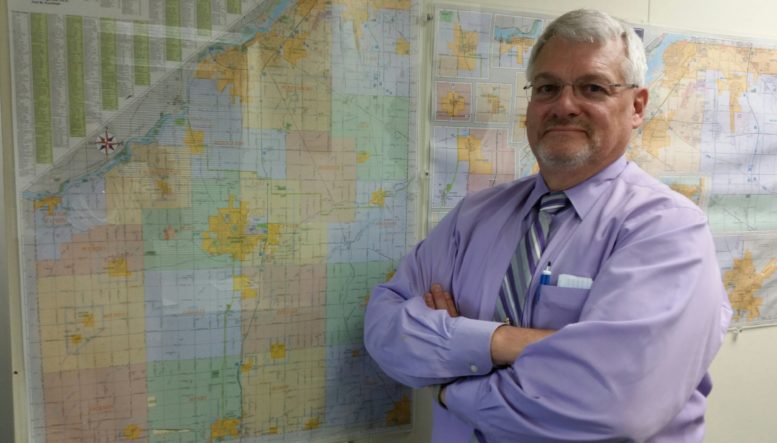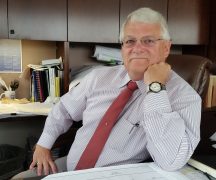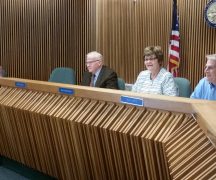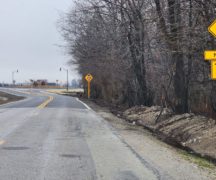By JAN LARSON McLAUGHLIN
BG Independent News
Wood County’s got some rough roads ahead, not to mention some bridges long overdue on being replaced.
Wood County Engineer John Musteric took his road show to the crowded courthouse atrium Tuesday for the State of the County address.
“It’s not good,” he told the crowd.
The county has 245 miles of roads to maintain, plus 441 bridges with an average age of 41 years. More than 20 bridges have passed the century mark, with the granddaddy of them all being the 133-year-old bridge on Custar Road south of Sand Ridge Road.
“We’re way behind, way behind,” Musteric said.
Musteric drew a quick road map for the audience. Nearly three-quarters of the county’s roads are rated marginal or lower. Nearly half of those are ranked as poor or serious. Bringing those roads up to fair condition would cost an estimated $39 million.
The county engineer’s office is studying pavement preservation practices. The lifespan of average pavement is 25 years. To catch up, the county would need to pave 35 miles every year – costing about $10.3 million each year. Instead, the county is spending about $1.1 million a year on paving.
The county roads and bridges are at a crisis, Musteric said after the public address. “We’ve been in a crisis mode for a long time. We’ve got so much to take care of and maintain.”
The engineer’s office is planning to draw the line at paving roads that have crumbling culverts underneath. Since there are about 2,500 culverts in the county, that could add up to quite a few road miles.
When it comes to bridges, the county plans to replace four this year, costing about $1.2 million. That is just a drop in the bucket, with 441 bridges in Wood County. More than half are over 50 years old, and 52 bridges are ranked in poor or worse shape. The cost to replace those 52 would add up to $20.8 million, Musteric said.
At the pace the county is going, it would take 90 years to replace all the bridges.
The big roadblock to paving and bridge repairs is the lack of funding.
The county engineer’s office gets funding from the state gas tax, license plate fees and a smaller portion from traffic fines.
“It’s just a struggle because the gas tax hasn’t been raised,” Musteric said about the state tax. “We’re at their mercy.
So Musteric has some ideas. He plans to talk with the county commissioners Thursday at 10 a.m. about a possible $5 permissive plate fee, plus an overweight vehicle program.
“We’re not going to get rich on this,” but it will help, Musteric said. The plate fee would raise about $750,000 to $800,000 a year.
The overweight permit plan has already faced criticism by some. “People think we’re going to target the farming community,” he said. But Musteric said the goal is to treat all motorists the same – and he knows that many people are violating road load limits.
“Some of them are twice the legal loads,” he said. “It’s kind of silly to spend all this money to fix our roads and bridges and find out they are being driven over by overweight vehicles.”
Musteric is also trying to shift some of the burden for roads and bridges to municipalities and townships where possible. His office is looking into putting bridges inside towns and cities into municipal maintenance. And he is studying moving some smaller roads off his list to local townships.
Also at the state of the county address, Musteric talked about progress on roundabouts in the county. The roundabout at Roachton and Hull Prairie roads is complete, and the work on one at Buck and Lime City roads near Penta Career Center will start in July.
Funding has also been secured for a roundabout at Napoleon and Campbell Hill roads, Bowling Green, with work to begin in 2022.





